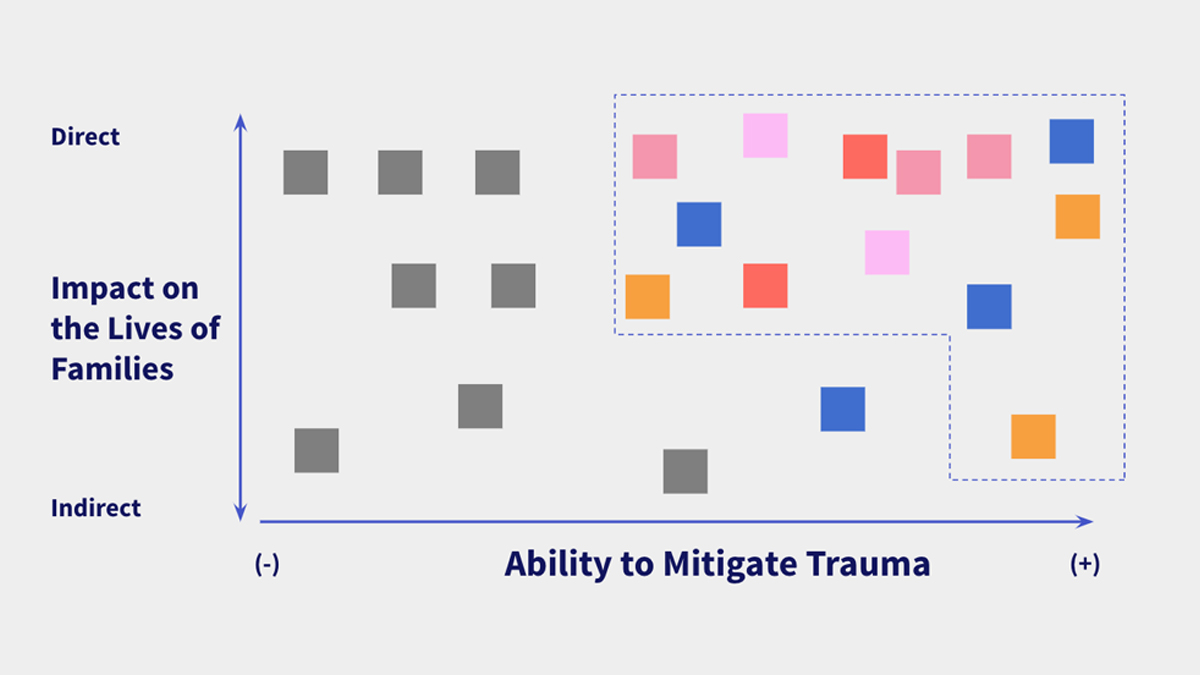Assessing trauma-informed care solutions for homeless and sheltered families in New York City
Prioritizing shelter policies and practices based on their impact on families and their ability to mitigate homelessness trauma
description
There are many criteria that teams can use to evaluate which ideas to take forward into solution development. To help with this process of sorting and prioritization, the Service Design Studio at the New York City Mayor’s Office for Economic Opportunity used an evaluation matrix. The design team was tasked with evaluating the current practices of New York City homeless shelters and designing solutions to help mitigate homelessness trauma for families living in these shelters. The team conducted in-depth research and interviews with stakeholders before conducting a co-design workshop to brainstorm ideas. The resulting ideas were ranked in the matrix based on two main evaluation criteria:
-
The vertical axis measured how direct of an impact the solution would have on a family’s shelter experience. Ideas with a more direct impact were ranked higher than those resulting in an indirect impact.
-
The horizontal axis categorized ideas by their ability to mitigate trauma. To evaluate this, the design team used four key principles for trauma-informed organizations. Ideas embodying more of the four principles ranked higher than those meeting only one or two.
By using the evaluation matrix as part of their design process, the team was able to identify ideas to take forward towards concept development.
what is interesting
By mapping the ideas on an evaluation matrix, the design team was able to visually sort and identify patterns between the solutions with the most impact. The combination of the four key trauma-informed principles with the evaluation matrix allowed for a deeper evaluation of the service solutions, helping identify ideas that were more well-rounded and worth further refinement.
Read more about this
case study

